This paper was presented at the WCRR2011 (World Congres on Railway Research 2011)
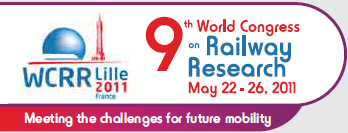
Andrea Gatti, Antonio Ghelardini
Trenitalia s.p.a. – Direzione Tecnica – Ingegneria Rotabili e Tecnologie di Base
Sistemi di Controllo, Telecomunicazioni e Segnalamento
Viale S. Lavagnini 58 – 50129 Firenze Italy
A sound knowledge about energy needs and how to manage them represents the way to improve the efficiency of the systems. We can move people in a greener way, using less energy and reach a better quality of life.
Institutional and regulatory framework
The liberalization of European railway markets, pushed by the separation between infrastructure and carrier companies in each European country, leads to an increase of cross-border traffic. In this new scenario, market competition and cost transparency will make the difference.
Sustainable development efforts already mandatory in EU Countries leads to some changes to the current energy management: this will force the passage from conventional consumption cost to cost based on effective consumption for traction energy. So, new energy billing rules will be used into inter-operable railway networks.
Energy meter Data are necessary input for railway undertakings in their energy management work. Train driving techniques can have a significant effect on the energy consumed for trains operating over the same route with the same stopping patterns. By using accurate energy data, railway undertakings can optimize driving technique, climate control and parking mode. It is documented that this delivers at least 10% of improvement in energy efficiency. Knowing how much energy is used and being billed accurately provides an incentive to railway undertakings to reduce energy consumption.
Energy meters are also a necessity if railway undertakings are to enter the energy market as eligible consumer and the Third-Party Access (TPA) principle are to be implemented regarding electric energy to trains [2]. The Third-Party Access right in the energy market context is the idea that in certain circumstances economically independent undertakings operating in the energy sector should have a legally enforceable right to access and use various energy network facilities owned by other companies. The IEM Directives provide that the TPA right is applicable exclusively to supply contracts with ‘eligible customers’, that is, a strictly specified group of customers to whom the IEM Directives guarantee the right to purchase energy from the supplier of their choice [4].
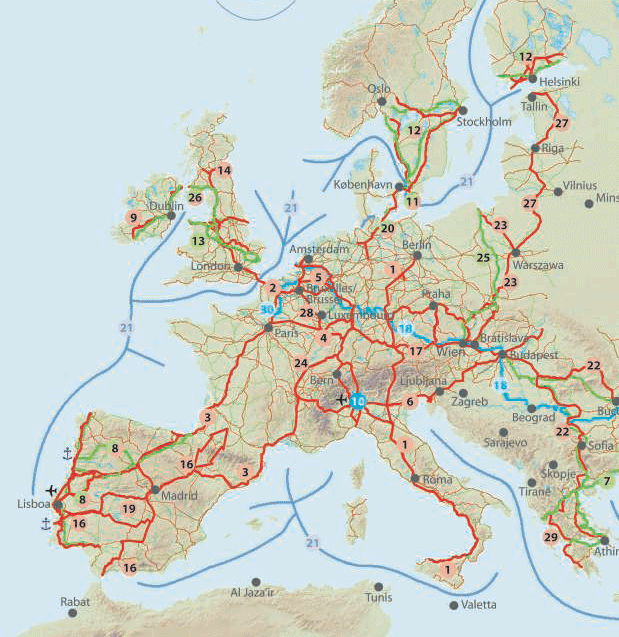
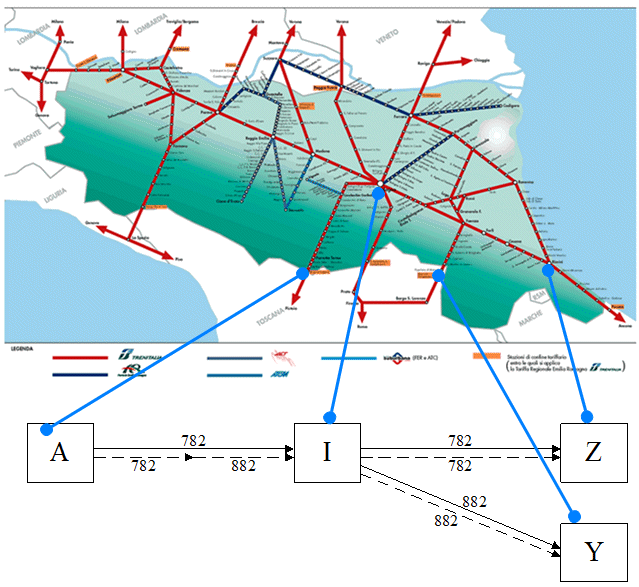
Country Boundary and Tariff Boundary are concepts in evolution, actually it is quite simple to speak about Country Boundary. Historical political border are still present and Relevant border position for billing of energy (bilaterally coordinated) could exist, but if we think in terms of future integration inside the EU we will start to speak about Tariff Boundary and the Relevant Border Position become a dynamic point. In Figure 1 each track is operated by a different Energy Provider and each code represent a possible Energy Provider. The EMS is obliged to evolve in that direction and some of the traction unit side key points could be summarized as :
The Consumption Point (CP) is an identified Traction Unit (TU) equipped by certified EMS devices where the number of CP are defined by the consist architecture (Multi-voltage systems, n° of traction units etc).
- The CP is fully autonomous, no need of ground balises like RFID or sideway references;
- Consumption data are associated to Geographical Position and Synchronous Time Stamp;
- The Consumption Data for billing purpose are secured;
- The Consumption Data for Energy Management and Saving purpose could be access protected;
- Near Real Time Snapshoot Capability of Consumption Data.
Billing and Energy Saving purposes data exchange, not limited to simple file transfers, drives to a near real time communication infrastructure between train and ground. The Cross-Border services either in terms of Country boundary or Tariff Boundary drive to an Open Communication Infrastructure. Some of the key points from the Railway Undertakings (RU) and Infrastructure Manager (IM) point of view:
- Separation of CP Data communication capability from the business logic of Data Collecting Service Providers, Energy Providers, Energy Carrier Providers and Billing Service Providers;
- Continuous tracking of the Consumption data for power consumption optimization;
- Capability of Continuous tracking of the CP for Energy Consumption Management also suitable for Energy Saving Management.
The installation of energy meters on board and new settlement systems will help to achieve the goal of full inter-operability for railway traffic in Europe and will finally facilitate the free market for RU.
The resulting operational environment will make possible a new correct approach for energy consumption of traction energy with energy saving and reduction costs.
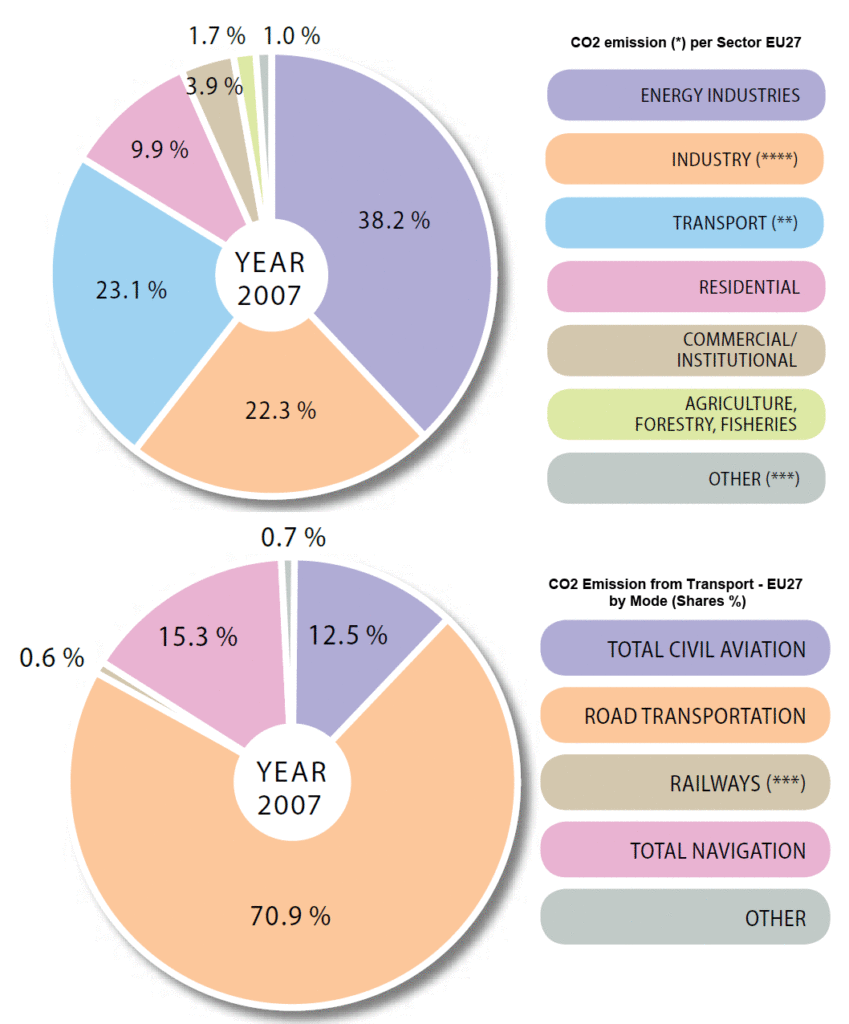
notes:
(*) excluding LULUcF (Land Use, Land – Use change and Forestry) emissions and international bunkers;
(**) excluding international bunkers (international traffic departing from the EU);
(***) emissions from Fuel combustion in other (Not elsewhere specified), Fugitive emissions from Fuels, Solvent and other product Use, Waste, other;
(****) emissions from Manufacturing and construction and industrial processes.
The Energy Measurement System (EMS)
Trenitalia efforts are focused mainly in defining an open platform to implement and deploy the needed services for Energy Saving and Billing purposes. Other task is defining a suitable framework able to manage the Conformity Assessment of the Energy Measurement System (EMS) and the Certification of the Installation Procedure. For existing vehicles that will need to be retrofitted with EMS installation, design and deployment plays a significant role and this framework was defined to deals with. This method is summarized in Figure 3 and proposed by Trenitalia as a standard solution in Cenelec TC9X WG11 EN 50463 [1]. The different phases of the Certification approach are ranging from the Component homologation to the EMS installation certification. The combination of a Certified EMS installed on a Traction Unit (i.e. locomotive, EMU etc) using a Certified Installation Procedure is defined as Consumption Point (CP). The Consumption Data either for billing purpose or energy saving purpose are referred to the Consumption Point Identifier. The Certified Installation Procedure become part of the Traction Unit Maintenance Plan and could be performed according the RU Quality Assurance Procedures.
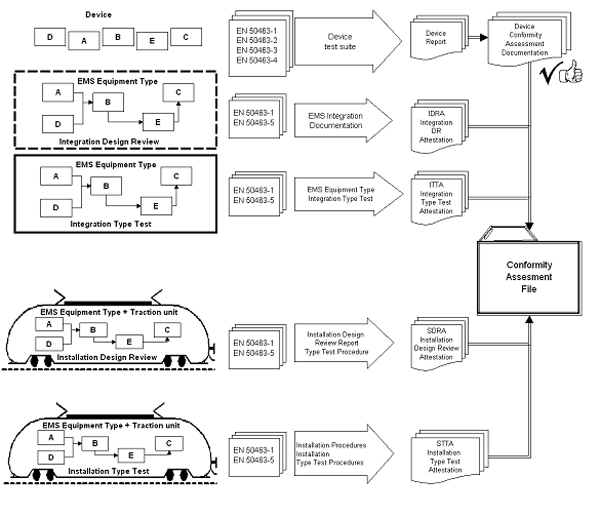
The train is a moving object and it’s not a fixed building. The EN 50463 Energy Measurement System is the first mobile energy meter in the history of human being.
EMS is an on board equipment that shall first conforms to railway regulations and standardizations and then to comply with metrological requirements. Figure 4 illustrates the EN 50463 EMS Functional Breakdown Structure and Figure 5 shows the relationship between the TSI CR LOC & PAS [11] and the UIC leaflet 930 [10], their main sub-functions and the structure of the dataflow.
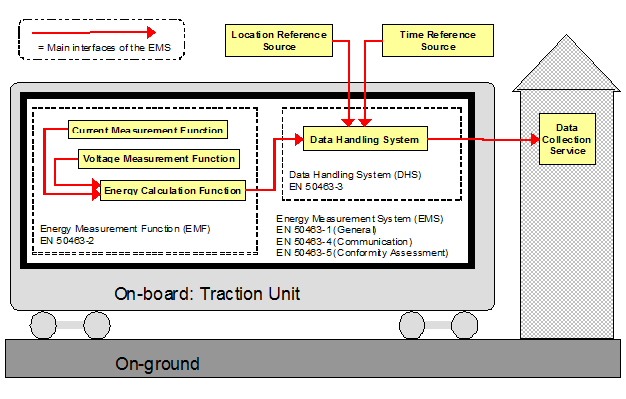
This method allows the conformity assessment arrangements for newly manufactured EMS installed on a traction unit, including the integration conformity assessment and installation conformity assessment. In addition, this also allows the conformity assessment procedures for device and ancillary component replacement (e.g. due to damage in service), and periodical check to verify that the EMS conformity assessment remains valid and confirming metrological properties. This confirm that the EMS can continue to be used. The EMS certification process, inside the Life Cycle of the vehicles, is more than a metrological assessment.
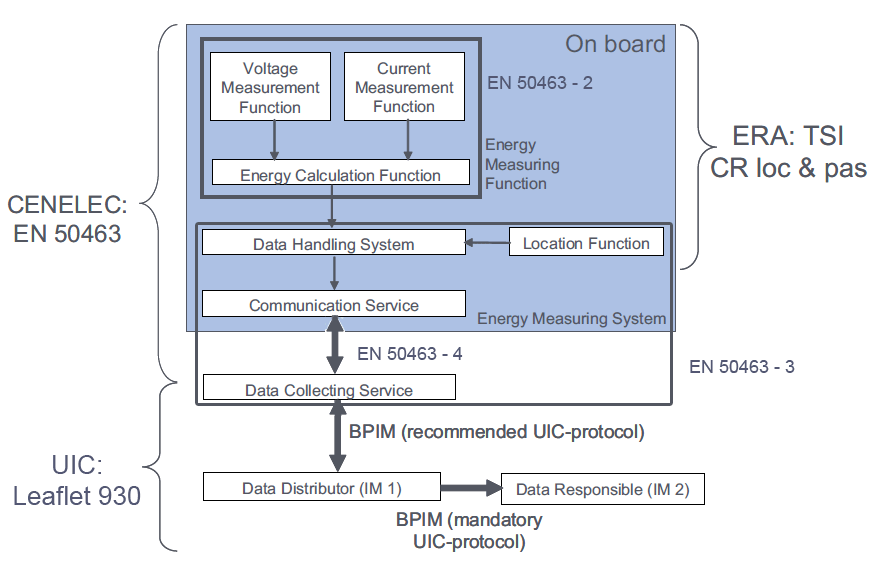
Installation on existing vehicles
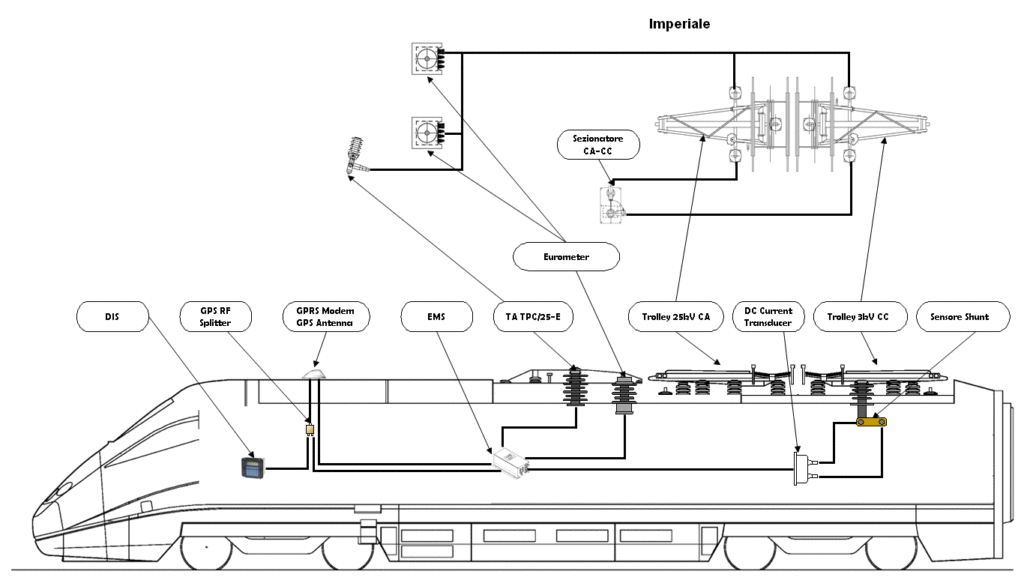
This method was applied as trial test to an existing consist: the multi-voltage (25kV AC and 3kV DC) ETR500 Frecciarossa. The ETR500 is normally composed by two E404 series locomotives and 11 coaches. Each E404 is equipped as illustrated in Figure 6. Some of the existing sensors and transducers where used “as is”. They are able to fulfill the EMS requirements, while others where replaced with improved ones pin-to-pin compatible. All wiring had been verified in order to fulfill the EN 50463.
The Certified Installation Procedure become part of the Traction Unit Maintenance Plan and performed according the Trenitalia Quality Assurance Procedures.
On board to Ground Communication
The Cross-Border services either in terms of Country boundary or Tariff Boundary drive to an Open and Standardized Communication Infrastructure. The train, as a cluster of devices connected by a network, is “a mobile object” that is performing some services like passenger information, train identification, fleet management and energy measuring for billing and saving purposes.
The Figure 7 shows the key components of the Reference Architecture and the Relation in the functional communication architecture [7].
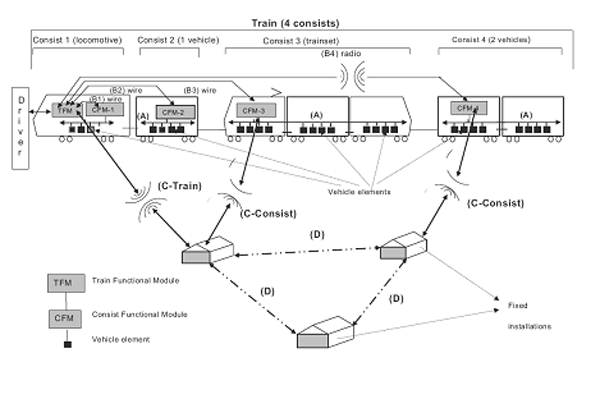
The EMS will play an important role in fleet management. The train is connected to the ground section with a pool of wireless connections and is capable to switch between them “on the fly” according to the requirement of bandwidth requested by the “service”. These services are accessible through the standard interface.
The Figure 8 shows the key components of the Communication Scenario showing the interaction between the network’s elements either mobile or fixed.
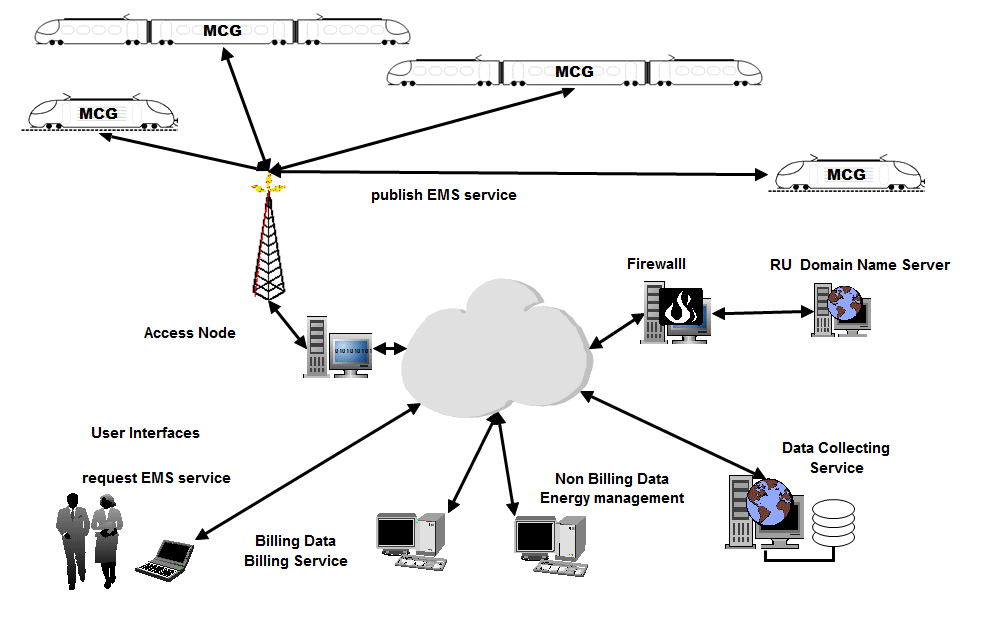
The behavior of the Mobile Communication Gateway (MCG) depends by the EMS architecture: in case of shared MCG, it acts as a proxy, representing the train functional structure to the ground network; in case of dedicated MCG, it acts as an IP sub domain device allowing each function/services to be reachable through its functional address. Functional addressing is one of the key point managed by the IEC TC9 WG46 – Onboard multimedia systems for railways.
Considering the existing network structures and services of the railway operators, Figure 9 shows the Trenitalia actual communication infrastructure. Key points are the interoperability of the system and the communication protocols of the applications. The on board services need to be accessed either by functional address of the services or by direct access to the devices providing them.
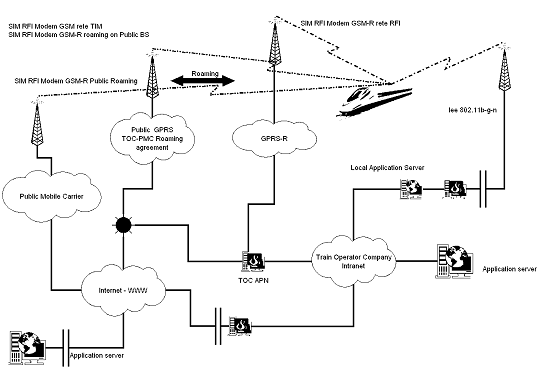
Independently from the wireless technology used by the communication channel, the use of TCP/IP v4 protocol according to RFC1180 could assure the interoperability of the platform. The application protocol allowed could be ftp, http, ssl and services like http/http over ssl (https) server and ftp/ftp over ssl (ftps) server could be available either on the On Board system or on the Application Server.
It is assumed that the services use standard port only. In this environment the Authentication, Authorization and Accounting service is mandatory. The on-board mobile communication subsystem shall meet the following general requirements:
- Stable connection from the application point of view irrespectively of changes of the mobile communication networks and providers when the train is moving through different areas (countries and regions). Stable connection is referred to the application interface and does not mean a permanent physical connection.
- Hand-over according to Quality of Service parameters in case that more than one bearer is available in the MCG. Provided by the Network Selector protocol.
- Hand-over of Network Provider according to roaming availability. Provided by the Network Selector protocol.
- Communication Security (authentication, authorization, encryption).
Energy Saving Strategies
All Data gathered from the energy meters are necessary input for RU in their energy management work. In the previous clauses we describe all “Building Blocks” necessary to set-up a Data Warehouse Intelligence on Energy Usage. The use of the gathered data for billing purpose is the simplest one. A little bit more complex is to set up an Energy Information System able to manage data on vehicles and journeys, run time energy data and situational data like organizational data and weather condition [9].
These information could be used either in near real time condition to improve the driving patterns (efficient drive) according to the traffic condition or in attribution of energy consumption (energy cost forecast) and analysis on timetabling efficiencies.
Train driving technique can have a significant effect on the energy consumed for trains operating over the same route with the same stopping patterns. As example, the Timetable could be build for train trajectory optimization either for better reuse of regenerative energy or for adjustments in the timetable tailored for energy saving. Such approach can be considered at both the timetable design stage and dynamically according traffic and rolling stock condition. Area of improvement are also climate control and parking mode.
In all cases, the performance of the Energy Management System are affected by the Human Factor [9]. It is necessary inside the organization to increase awareness of the importance of energy saving, to convince all stake holders to take part in the process, to motivate train drivers using incentive (e.g. energy saving competition) , institutionalizing a learning process with individual and focusing on a sustained process (e.g. energy consumption display).
A sound knowledge about energy needs and how to manage them represents the way to improve the efficiency of the systems. We can move people in a greener way, using less energy and reaching a better quality of life.
Acknowledgements
The EN 50463 norm is based on the joint design and engineering effort of numerous colleagues. They have brought their expertise together to make it happen. We want to present our credits to the whole Cenelec CLC TC9X WG11 team for the challenging and stimulating environment. Finally, we like to express our sincere thanks to Mr. Carlo Fasoli, Convener of the WG11.
ACRONYMS
AAA – Authentication, Authorization And Accounting
APN – Access Point Name
BPIM – Business Process Information Model
CP – Consumption Point
DIS – Driver Information System
EMU – Electrical Multiple Unit
EMS – Energy Measurement System
ERA – European Railway Agency
ftp – File Transfer Protocol
http – Hyper Text Transfer Protocol
IM – Infrastructure Manager
MCG – Mobile Communication Gateway
PMC – Public Mobile Carrier
RU – Railway undertakings
ssl – Secure socket Layer
TPA – Third-Party Access
TU – Traction Unit
UIC – Union International des Chemin de Fer
REFERENCE
[1] EN 50463 – Railway applications – Energy measurement on-board trains
[2] EIM position paper on energy meters on electric trains
[3] EU energy and transport in figures – Statistical pocket book 2010
[4] Aleksander Kotlowski. “Third-Party Access Rights in the Energy Sector: A Competition Law Perspective” Utilities Law Review 16.3 (2007): 101.
[5] Directive 2008/57/EC ANNEX II
[6] IST-1999-20096 – Traincom project
[7] CLC-TR50501-1 – Railway applications. Rolling stock. Intercommunication between vehicles and train/wayside. Data dictionary and rules for functional standardization
[8] Energy Efficiency of a Railway Power Network with Simulation – G. J. Hull, Dr C. Roberts and Dr S. Hillmansen – Centre for Railway Research and Education – University of Birmingham
[9] Energy-efficient driving – A change management programme of Deutsche Bahn’s Passenger Transport Division
[10] UIC leaflet 930: Exchange of data for cross-border railway energy settlement, UIC 2009
[11] TSI CR LOC & PAS: Locomotives And Passenger RST
